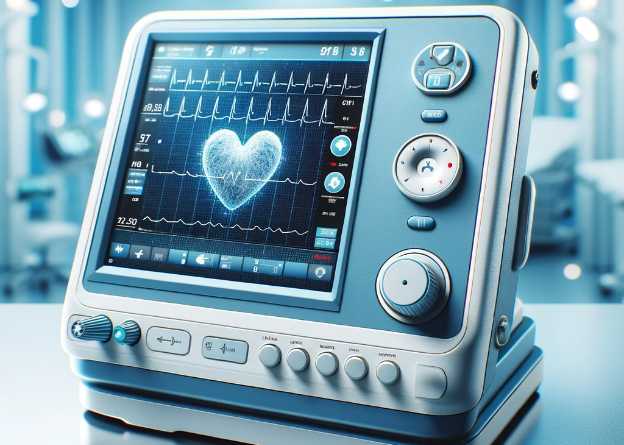Revolutionizing Healthcare: The Role of ISO 13485 Certification
I. Introduction
A. Brief overview of ISO 13485 Certification
ISO 13485 Certification is an internationally recognized standard specifically tailored for organizations involved in the medical device industry. It outlines the requirements for a comprehensive quality management system, ensuring that medical devices consistently meet regulatory and customer requirements. This certification demonstrates an organization’s commitment to producing safe and effective medical devices while adhering to strict quality standards.
B. Importance of quality management in healthcare
Quality management plays a critical role in the healthcare industry as it directly impacts patient safety, treatment outcomes, and overall satisfaction. With the increasing complexity of medical technologies and treatments, the need for robust quality management systems has become paramount. Effective quality management ensures that healthcare organizations maintain high standards of care, minimize errors, and continuously improve their processes to enhance patient outcomes. It also fosters trust and confidence among patients, healthcare professionals, regulatory bodies, and stakeholders in the healthcare ecosystem. Therefore, prioritizing quality management is essential for delivering safe, reliable, and high-quality healthcare services.
II. Understanding ISO 13485 Certification
A. Definition and background of ISO 13485
ISO 13485 is an internationally recognized standard that specifies the requirements for a quality management system (QMS) for organizations involved in the design, development, production, installation, and servicing of medical devices. It provides a framework for ensuring that medical devices meet regulatory requirements and customer expectations for safety and effectiveness. ISO 13485 was first published in 1996 and has since undergone several revisions to align with evolving industry practices and regulatory requirements.
B. Key principles and requirements of the certification:
The key principles and requirements of ISO 13485 Certification include:
1. Management Responsibility: Demonstrating Commitment to Quality
Top management’s pivotal role in ensuring the success of ISO 13485 Certification cannot be overstated. By demonstrating unwavering commitment to quality management, they set the tone for the entire organization. Clear quality objectives and policies must be established, serving as guiding principles that align with the organization’s overall mission and vision. Through effective leadership and communication, top management fosters a culture of quality consciousness throughout the organization, driving continuous improvement and adherence to ISO 13485 standards.
2. Resource Management: Allocating Resources for Success
Adequate resource allocation is fundamental to the effective implementation of ISO 13485 Certification. This encompasses not only financial resources but also personnel, infrastructure, and equipment. Investing in the necessary resources ensures that the Quality Management System (QMS) is properly supported, enabling the organization to meet the stringent requirements of ISO 13485. By allocating resources strategically, organizations can optimize their processes, enhance efficiency, and ultimately deliver high-quality medical devices that meet regulatory standards and customer expectations.
3. Product Realization: Ensuring Consistent Quality
In the realm of ISO 13485 Certification, product realization is paramount. This entails establishing robust processes for product development, manufacturing, and service provision. From concept to delivery, every stage of the product lifecycle must be meticulously controlled to ensure consistent quality and compliance with regulatory requirements. By implementing standardized procedures and rigorous quality control measures, organizations can minimize variability, mitigate risks, and deliver medical devices that meet the highest standards of safety and effectiveness.
III. Benefits of ISO 13485 Certification in Healthcare
A. Enhanced Patient Safety and Satisfaction
ISO 13485 Certification plays a vital role in enhancing patient safety and satisfaction within the healthcare industry. By adhering to the stringent quality management standards outlined in ISO 13485, organizations ensure the consistent production of safe and effective medical devices. This significantly reduces the risk of adverse events, errors, and product defects, ultimately safeguarding the well-being of patients. Moreover, when patients receive high-quality medical devices that meet their needs and expectations, their satisfaction levels increase, fostering trust and confidence in healthcare providers and manufacturers.
B. Improved Regulatory Compliance
1. Enhancing Reputation and Credibility
ISO 13485 Certification acts as a hallmark of quality management, enhancing the reputation and credibility of healthcare organizations. By showcasing commitment to stringent quality standards, entities can earn trust and confidence from stakeholders, including patients, regulatory authorities, and industry peers.
2. Fostering Continuous Improvement
ISO 13485 Certification is not merely a one-time achievement but rather a catalyst for continuous improvement. Through regular audits and assessments, organizations can identify areas for enhancement and refine their quality management systems accordingly. This commitment to ongoing improvement not only ensures sustained compliance but also drives organizational excellence and innovation.
3. Facilitating Market Access
ISO 13485 Certification opens doors to new markets and opportunities for healthcare organizations. With certification in hand, entities can access international markets with greater ease, expand their customer base, and capitalize on global business prospects. This expansion not only drives growth but also strengthens the organization’s competitive position in the healthcare industry.
4. Demonstrating Conformity
By integrating ISO 13485-compliant quality management systems, organizations can exhibit conformity with regulatory standards effectively. This demonstration of adherence not only ensures legal compliance but also bolsters the organization’s reputation and credibility within the healthcare sector. The implementation of ISO 13485 standards enables healthcare entities to streamline compliance processes efficiently. This optimization facilitates smoother operations, minimizes errors, and reduces the risk of non-compliance penalties and sanctions.
IV. ISO 13485 Implementation Process
A. Steps involved in obtaining ISO 13485 Certification
1. Conducting a Thorough Gap Analysis
Before embarking on the ISO 13485 certification journey, it’s crucial to conduct a meticulous gap analysis. This involves scrutinizing your existing quality management system against the rigorous requirements set forth by ISO 13485. By identifying areas that demand refinement or enhancement, organizations pave the path towards compliance and excellence.
2. Crafting Comprehensive Documentation
Documentation serves as the backbone of any quality management system. To align with ISO 13485 standards, meticulous documentation is indispensable. This encompasses crafting a quality manual, delineating procedures, drafting work instructions, and maintaining meticulous records. Robust documentation not only facilitates compliance but also fosters clarity and transparency within the organization.
3. Empowering Through Training and Awareness
Ensuring that every member of the organization is well-versed in ISO 13485 requirements is paramount. Through comprehensive training programs, employees gain a profound understanding of their roles in implementing and upholding the quality management system. This cultivates a culture of awareness and accountability, driving continuous improvement and adherence to standards.
4. Seamless Implementation of Changes
Implementation is the cornerstone of ISO 13485 certification. Organizations must seamlessly integrate necessary changes into their quality management systems to align with ISO 13485 requirements. This may entail redefining processes, enhancing infrastructure, and allocating resources judiciously. Embracing change with agility and precision is pivotal for successful implementation.
B. Common challenges during implementation and how to overcome them:
- Resource Constraints: Limited resources, both in terms of personnel and finances, can hinder the implementation process. To overcome this challenge, prioritize activities, allocate resources efficiently, and consider outsourcing certain tasks if necessary.
- Resistance to Change: Resistance from employees to adapt to new processes and procedures can slow down implementation efforts. Engage employees early in the process, communicate the benefits of ISO 13485 certification, and provide training and support to facilitate a smooth transition.
- Complexity of Requirements: The detailed requirements of ISO 13485 can be overwhelming, especially for organizations with limited experience in quality management systems. Break down the requirements into manageable tasks, seek guidance from experts or consultants, and leverage available resources such as ISO 13485 implementation guides and templates.
- Maintaining Momentum: Implementation is a long-term process, and maintaining momentum can be challenging amidst competing priorities and daily operations. Set realistic timelines, establish milestones, and regularly review progress to keep the implementation on track.
- Documentation Overload: Developing and maintaining documentation can become burdensome, leading to inefficiencies and disorganization. Streamline documentation processes, use electronic document management systems, and ensure clear communication channels to prevent document overload.
V. Conclusion
A. Recap of the Significance of ISO 13485 Certification in Revolutionizing Healthcare
ISO 13485 certification plays a pivotal role in revolutionizing healthcare by ensuring the highest standards of quality and safety in the production of medical devices. By adhering to ISO 13485 standards, organizations demonstrate their commitment to excellence, bolstering confidence among stakeholders and fostering a culture of accountability. This certification not only enhances the credibility of medical device manufacturers but also contributes to improved patient outcomes and overall healthcare efficacy. In a rapidly evolving healthcare landscape, ISO 13485 certification stands as a beacon of quality, driving innovation and excellence across the industry.
B. Final Thoughts on the Transformative Impact of Quality Management Systems
Quality management systems, epitomized by ISO 13485 certification, have a transformative impact on organizations and industries alike. By embracing rigorous standards and best practices, organizations elevate their operational efficiency, mitigate risks, and enhance customer satisfaction. Quality management systems not only ensure compliance with regulatory requirements but also foster a culture of continuous improvement and innovation. As we navigate the complexities of the modern world, quality management systems serve as a cornerstone for organizational success, driving excellence, and propelling industries forward into a future defined by uncompromising quality and unwavering commitment to excellence.

